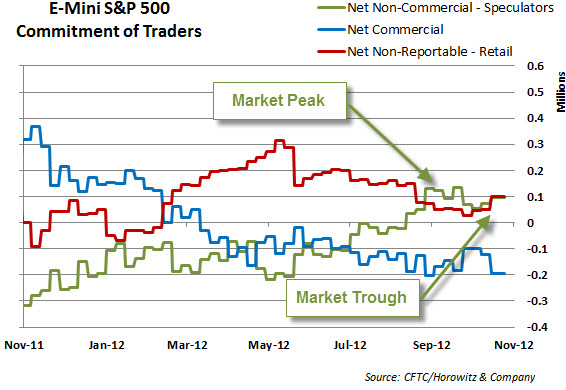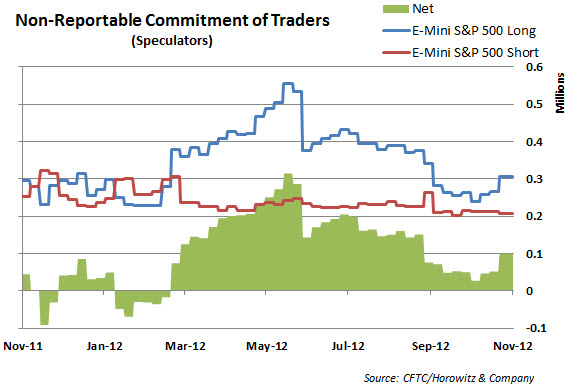Take a look at the latest COT report. Once again, it looks as though much of the thrust from last week was coming from a short-squeeze and performance chase. In particular, a big change in position was reported for the speculator – covering shorts and adding long exposure.
Notice that the big increase in net-long exposure came as shorts covered into the huge rally we saw last week.
Segregating just the Speculators shows it much better.
From the CFTC:
Commercial and Non-Commercial Traders
When an individual reportable trader is identified to the Commission, the trader is classified either as “commercial” or “non-commercial.” All of a trader’s reported futures positions in a commodity are classified as commercial if the trader uses futures contracts in that particular commodity for hedging as defined in CFTC Regulation 1.3(z), 17 CFR 1.3(z). A trading entity generally gets classified as a “commercial” trader by filing a statement with the Commission, on CFTC Form 40: Statement of Reporting Trader, that it is commercially “…engaged in business activities hedged by the use of the futures or option markets.” To ensure that traders are classified with accuracy and consistency, Commission staff may exercise judgment in re-classifying a trader if it has additional information about the trader’s use of the markets. A trader may be classified as a commercial trader in some commodities and as a non-commercial trader in other commodities. A single trading entity cannot be classified as both a commercial and non-commercial trader in the same commodity. Nonetheless, a multi-functional organization that has more than one trading entity may have each trading entity classified separately in a commodity. For example, a financial organization trading in financial futures may have a banking entity whose positions are classified as commercial and have a separate money-management entity whose positions are classified as non-commercial.
Nonreportable Positions
The long and short open interest shown as “Nonreportable Positions” is derived by subtracting total long and short “Reportable Positions” from the total open interest. Accordingly, for “Nonreportable Positions,” the number of traders involved and the commercial/non-commercial classification of each trader are unknown.


















